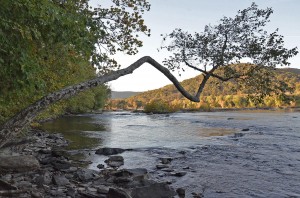The Chesapeake Bay carries a load of “nutrients,” waste, that compromise the Bay.
Virginia has recently decided to devote $73 million to underwrite voluntary efforts by farmers and landowners to follow best management practices (BMPs) to keep the water clear and the soil rich close to home so that our streams emptying into the Potomac don’t compromise the Bay.
This soil and water conservation program is for farmers and landowners in Loudoun County.
There are similar programs across Virginia, in Maryland, and in every state across the nation.
Loudoun County has been assigned $1 Million to do what it can to make a difference; this is a serious effort; last year the allotment for Loudoun County was about half that amount.
So this is a great opportunity for property owners to make a real difference for the better in Loudoun as the waters here flow into the Potomac and then into the Chesapeake Bay.
We should be aware that, along the way, as the Potomac travels east, it is the water supply for Loudoun and neighboring Counties; there are “straws” in the Potomac drawing these waters for the general public.
Local Soil and Water Conservation Districts including our own review applications to share the cost of implementing best practices to preserve and protect the soil and water.
The array of districts review and dedicate the funds for worthy applications.
The most popular aspect of the several programs is called the “cost share program.”
In some cases, because of changing rules this year, the Districts may be able to underwrite 100% of the cost depending mostly on the size of buffers if a larger buffer makes sense for the applicant’s property under consideration.
The program objective is straightforward. How it’s implemented can be more complex because of logistics and topography and what works for the landowner.
There are experts who work at this in the various districts to assure the effectiveness of the program and Loudoun not only has a diverse staff of experts in this science of agriculture but who have the experience of visiting and studying properties all over the County.
These Soil and Water Conservation Districts were formed across the nation after the human and agricultural disaster that we know as “the Dust Bowl.”
Plains grasslands had been deeply plowed and planted to wheat without regard for the danger of low soil moisture and drought.
High winds and choking dust swept across America from Texas to Nebraska. Tons of topsoil were blown off barren fields. Storm clouds carried the dust for hundreds of miles. Livestock and crops failed. Farmers and families died. It almost destroyed the nation’s bread basket.
Many know this from John Steinbeck’s Grapes of Wrath, the story of the Joads, escaping from Oklahoma, trapped in the Dust Bowl, headed out to California.
Others have no doubt watched the award winning documentary by Ken Burns on the Dust Bowl.
The fatal error was that no effort was made to understand how to apply dry land farming, resulting in the severe winds that carried the soil away as dust.
The most obvious practices in this region, where we are today, are to limit nutrients (waste) in the waters, and to exclude livestock from the streams with fencing and to re-direct the livestock to water troughs in the fields where they graze.
Cover crops and other practices discourage and contain erosion as well.
Assuring clean water warranties that our creeks, rivers and bay are fit to drink, to swim or boat, and will safely preserve and protect our water industries, the fisheries, and will eliminate dead zones that can compromise or kill the Bay shellfish, oysters and water creatures.
Landowners and farmers should consider whether they are suitable candidates for these cost share programs.
It’s good for your property and terrific for the Bay.
If you want more information, think you may have a situation that could benefit from BMPs, think about submitting an application for funding for your property to the Loudoun County Soil and Water Conservation District, and, if you have any questions, you may visit LSWCD.org or call Loudoun’s Soil and Water Conservation District at 571-918-4530.
[John Flannery is Director and Treasurer of the Loudoun County Soil and Water Conservation District]


